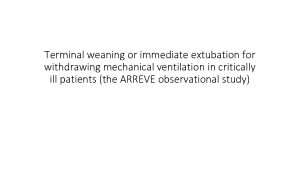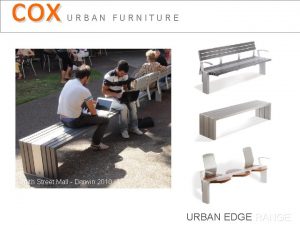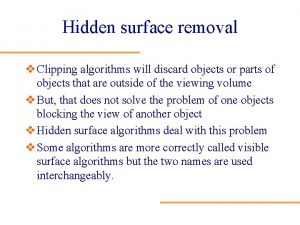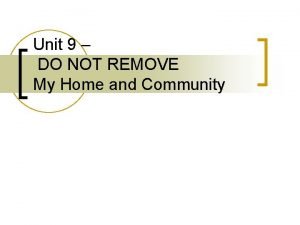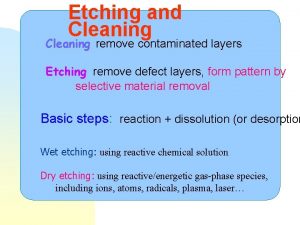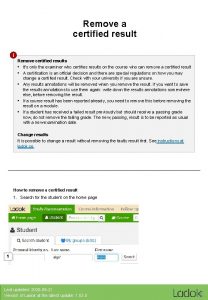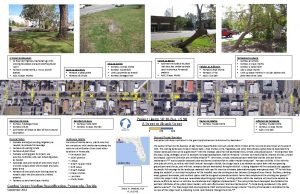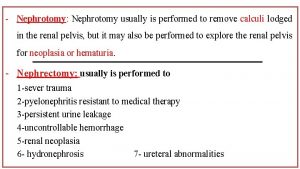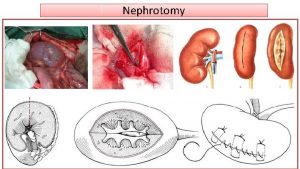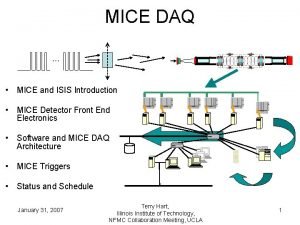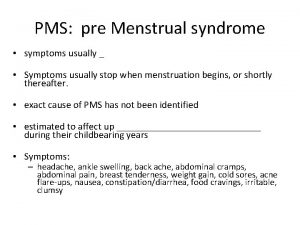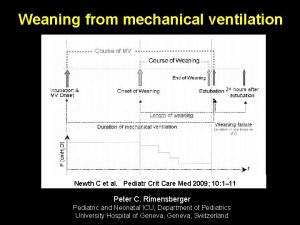Weaning mice Weaning mice Remove weaningage mice usually




































- Slides: 36

Weaning mice

Weaning mice • Remove weaning-age mice (usually 21 days) from the parent cage. • Separate the pups by sex. • Mark the parent cage with a separation card; mark the weaned cages with separation stickers

Before you start Check the problem log to see if you expect to have any separations Check the room for green OC cards

Before you start • Check your watch!! What time is it? • If you don’t have a watch, check the time on your pager

Why are you checking the time? So you can fill out the Special Services Log when you are done. Date Principal Investigator’s Name Types of Service Cage Separation (# of cages) Other Services Number of Hours Performed By (Print Name) Initials

Before you start • Double-check the OC card – Is it a supervisor check? – Double-check that the weaning due date is correct- look at the weaning date calendar.

Weaning mice • Remove weaning-age mice (usually 21 days) from the parent cage. • Separate the pups by sex. • Complete the necessary paperwork

Can you tell sex by color?

Can you tell sex from how they’re dressed?

We determine the sex of mice by examining the genitals

It isn’t so easy to sex pups Female Male Female For pups, the ano-genital distance is used to determine sex.

The ano-genital distance is longer in males than in females

• Female pups have a shorter anogenital distance • Female pups have nipples (which may not be visible if the pups are furry)

What sex is this pup? l Male l Female

Sex pups 2 at a time • If they look the same, try again until you get one that looks different. • The one with the longer anogenital distance is the male. The other is the female. • Keep one pup of known sex, and use it to compare against the rest of the pups.

What sex is this pup? Female Male

What sex is this pup? Female Male

Male Female

Male Female

Female l Male l

Weaning set-up • Parent cage • Male pup cage • Female pup cage • Even if you have more than 10 pups, start by separating the pups by sex into two cages.


Put some food on the floor for the pups

Housing pups • 5 females per cage • 4 males per cage • • Recheck the sex Put pellets of food on the cage floor Complete the green separation cards and stickers House the separated cages on the separation shelf

Separation cards The white sticker (with the separation number) goes on the green card. Write the date and the number of new cages created on the white sticker


Write the separation number on – The white cage card – Each of the green separation stickers


Put the separated cages on the separation shelf

Before you finish • Update the census • Initial the ‘addressed’ column in the problem log • Fill out the Special Services Log.

Update the census Write the number of new cages created in the plus (+) column of the census.

Initial the ‘addressed’ column in the problem log


Fill out the Special Services Log. • Fill out the Log. Put the number of new cages created in the separation column. • Look at your watch to determine the time to complete the separation. The whole time (including paperwork) counts.


The end
 Weaning oksigen
Weaning oksigen Weight loss after stopping amitriptyline
Weight loss after stopping amitriptyline Simplified weaning index
Simplified weaning index Weaning prolongado
Weaning prolongado Principles of weaning slideshare
Principles of weaning slideshare Weaning parameter
Weaning parameter China weaning fence
China weaning fence China weaning fence
China weaning fence Terminal weaning vs immediate extubation
Terminal weaning vs immediate extubation Ecmo priming
Ecmo priming Mazen kherallah
Mazen kherallah Weaning ventilation
Weaning ventilation Remove background
Remove background Jaxb remove namespace from root element
Jaxb remove namespace from root element Cox urban furniture
Cox urban furniture Remove handwriting from image
Remove handwriting from image How to remove background in word 2016
How to remove background in word 2016 Linked list remove first node
Linked list remove first node Source of nitrogen in atmosphere
Source of nitrogen in atmosphere Humility meaning
Humility meaning Haircutting serves as the
Haircutting serves as the Lis dep
Lis dep How does soap remove dirt
How does soap remove dirt Para que sirve
Para que sirve Image processing
Image processing Alteryx remove duplicates
Alteryx remove duplicates Remove section
Remove section Some polygons
Some polygons Spatial visualization asl
Spatial visualization asl Remove background from image
Remove background from image Remove the brackets and simplify questions
Remove the brackets and simplify questions Sectional views in engineering drawing
Sectional views in engineering drawing What will general-purpose detergents effectively remove?
What will general-purpose detergents effectively remove? Please remove before use
Please remove before use Remove synonym
Remove synonym Sakuna remove pollution
Sakuna remove pollution Remove background from image
Remove background from image








